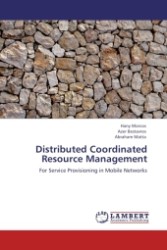- ホーム
- > 洋書
- > 英文書
- > Science / Mathematics
Full Description
This book contains the extended papers presented at the 2nd Workshop on Supervised and Unsupervised Ensemble Methods and their Applications (SUEMA)heldon21-22July,2008inPatras,Greece,inconjunctionwiththe 18thEuropeanConferenceon Arti?cial Intelligence(ECAI 2008). This wo- shop was a successor of the smaller event held in 2007 in conjunction with 3rd Iberian Conference on Pattern Recognition and Image Analysis, Girona, Spain. The success of that event as well as the publication of workshop - pers in the edited book "Supervised and Unsupervised Ensemble Methods and their Applications", published by Springer-Verlag in Studies in Com- tational Intelligence Series in volume 126, encouraged us to continue a good tradition. The scope of both SUEMA workshops (hence, the book as well) is the application of theoretical ideas in the ?eld of ensembles of classi?cation and clusteringalgorithmstoreal/lifeproblemsinscienceandindustry. Ensembles, which represent a number of algorithms whose class or cluster membership predictions are combined together to produce a single outcome value, have alreadyprovedto be a viable alternativeto a single best algorithmin various practical tasks under di?erent scenarios, from bioinformatics to biometrics, from medicine to network security.
The ensemble approach is caused to life by the famous "no free lunch" theorem, stating that there is no absolutely best algorithm to solve all problems. Although ensembles cannot be cons- ered as absolute remedy of a single algorithm de?ciency, it is widely believed thatensemblesprovideabetteranswerto"nofreelunch"theoremthanas- glebestalgorithm. Statistical,algorithmical,representational,computational and practical reasons can explain the success of ensemble methods.
Contents
An Ensemble Pruning Primer.- Evade Hard Multiple Classifier Systems.- A Personal Antispam System Based on a Behaviour-Knowledge Space Approach.- Weighted Decoding ECOC for Facial Action Unit Classification.- Prediction of Gene Function Using Ensembles of SVMs and Heterogeneous Data Sources.- Partitioner Trees for Classification: A New Ensemble Method.- Disturbing Neighbors Diversity for Decision Forests.- Improving Supervised Learning with Multiple Clusterings.- The Neighbors Voting Algorithm and Its Applications.- Clustering Ensembles with Active Constraints.- Verifiable Ensembles of Low-Dimensional Submodels for Multi-class Problems with Imbalanced Misclassification Costs.- Independent Data Model Selection for Ensemble Dispersion Forecasting.- Integrating Liknon Feature Selection and Committee Training.- Evaluating Hybrid Ensembles for Intelligent Decision Support for Intensive Care.






